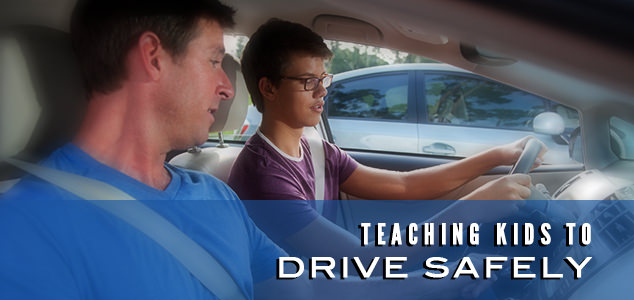Every parent knows the feeling- it is time for your teen to get his or her driver’s license. Even though it is a scary thought of having your child navigating himself or herself on the road, there are steps that you can take in order to focus on teen safety. Besides the basic driver’s education classes that most young drivers are required to take, AIS has compiled a list of three steps to keep your teenager safe while driving.
1. Car update:
Usually the new driver in the house gets a family-used vehicle, so it is imperative to have the vehicle up to date with all of its inspections. Make sure your teenager’s car’s tires, brakes, fluids, suspension, engine and alerts are all up to date. Not only can you use this car update as a way to keep your teenager safe, but it can also be used as a way to teach your child about the inner workings of his new car.
2. Set ground rules:
Driving restrictions, such as placing limits on nighttime driving and the number of teen passengers allowed to ride with your teen is also a good way to keep your new driver safe. Safety experts recommend no driving after 9 p.m. for newly licensed teens. After six months of driving, parents may choose to relax the restrictions by allowing one teen passenger and extend driving to 10 or 11p.m. It is important to keep a firm standing on these rules so your new driver doesn’t take advantage of his or her new privilege. Some states have “provisional license†restrictions that extend for the first several years of driving.
3. Wait and shop smart:
Another key factor to helping your teen to stay safe is to wait to buy them a new car. For the first year or so after your teen receives a license, let them share the family car. Keep safety in mind when buying a vehicle for your teen. Purchase a newer model mid-sized to large car that offers good crash protection. It is also imperative to stay away from cars with high performance engines which may encourage reckless driving; furthermore, stay clear of sport utility vehicles (SUVs) as they are more likely to roll over in a crash than cars.
Your teen might think they are ready to drive before you do, but the day when they take that driving test is inevitable. These steps and actions will help your new teenager to safely navigate the road.
The information in this article was obtained from various sources. This content is offered for educational purposes only and does not represent contractual agreements, nor is it intended to replace manuals or instructions provided by the manufacturer or the advice of a qualified professional. The definitions, terms and coverage in a given policy may be different than those suggested here and such policy will be governed by the language contained therein. No warranty or appropriateness for a specific purpose is expressed or implied.




